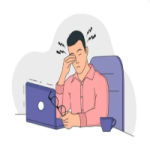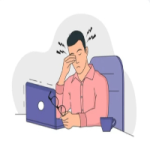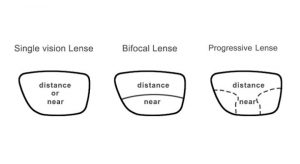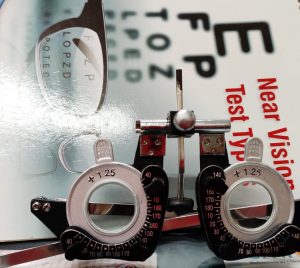Introduction: In our digital age, screens are an integral part of our daily lives. Whether it’s for work, entertainment, or socializing, many of us spend hours staring at our devices. While technology has its benefits, prolonged screen time can have significant effects on our vision. Understanding these effects and learning how to protect our eyes is essential for maintaining good eye health.
The Effects of Prolonged Screen Time on Vision
Digital Eye Strain:
One of the most common issues associated with extended screen use is digital eye strain, also known as computer vision syndrome. Symptoms can include:
Dry eyes
Blurred vision
Headaches
Neck and shoulder pain
These symptoms arise because staring at screens often leads to reduced blinking, which can dry out the eyes. A personal experience I had was after a long day of working on my laptop; I noticed my eyes felt
gritty and tired, a clear sign of digital eye strain.
Blue Light Exposure:
Screens emit blue light, which can disrupt our sleep patterns and contribute to eye discomfort. Research suggests that excessive
exposure to blue light may lead to long-term damage to the retina. While the science is still evolving, many people report feeling more fatigued after long hours in front of screens, especially at night.
Impact on Vision Clarity Prolonged screen time can also affect our vision clarity. Over time, the
constant focus on screens can lead to difficulty in focusing on objects at varying distances. This phenomenon is often referred to as " accommodative spasm," where the eye's ability to adjust focus becomes strained. I’ve noticed that after a few hours of screen time, it takes me longer to adjust when I look away to something in the distance.
Increased Risk of Eye Conditions
Long-term effects of excessive screen time may include an increased risk of developing conditions such as myopia (nearsightedness) and other refractive errors. Studies have shown a correlation between increased screen time and the rising rates of myopia, particularly in children and young adults.
Tips for Protection
Follow the 20-20-20 Rule:
To combat digital eye strain, try the 20-20-20 rule. Every 20 minutes, take a 20-second break to look at something 20 feet away. This simple practice can help relax your eye muscles and reduce fatigue.
Adjust Your Screen Settings
Make sure your screen is set to a comfortable brightness and contrast level. Many devices have a "night mode" or "blue light filter" that can reduce blue light exposure, especially in the evening. I’ve found that adjusting my screen settings has made a noticeable difference in how
my eyes feel after a long day.
Maintain Proper Distance and Position
Position your screen at least an arm’s length away and slightly below eye level. This can help reduce strain on your eyes and neck. If you’re working at a desk, consider using an adjustable chair and desk to maintain a comfortable posture.
Keep screens 20–24 inches away from your eyes.
Position screens at or slightly below eye level.
Blink Frequently:
Make a conscious effort to blink to keep eyes moist and reduce dryness.
Use Artificial Tears:
Over-the-counter lubricating eye drops can help prevent dryness.
Stay Hydrated and Blink Regularly
Remember to drink plenty of water throughout the day. Staying hydrated helps keep your eyes moist. Additionally, make a conscious effort to blink more often, especially when focused on screens. I’ve
started setting reminders on my phone to take short breaks, which helps me remember to blink and hydrate.
Schedule Regular Eye Exams
Regular eye check-ups are crucial for maintaining eye health. An eye care professional can provide personalized advice and detect any potential issues early on. I make it a point to visit my optometrist at least once a year, which has helped me stay on top of my eye health.
Conclusion
Prolonged screen time can have various effects on our vision, from digital eye strain , primarily leading to digital eye strain or computer vision syndrome (CVS) to long-term eye conditions. However, by implementing simple protective measures, we can significantly reduce these risks. Remember to take breaks, adjust your screen settings, and prioritize your eye health. Your eyes will thank you for it. Adopting practices like the 20-20-20 rule, maintaining proper screen distance, adjusting screen settings, and taking regular breaks can help safeguard eye health. Additionally, using blue light filters, blinking more often, and scheduling regular eye check-ups can minimize long-term
damage. By balancing screen usage with protective measures, you can preserve your vision and maintain overall eye comfort in today’s digital age.










